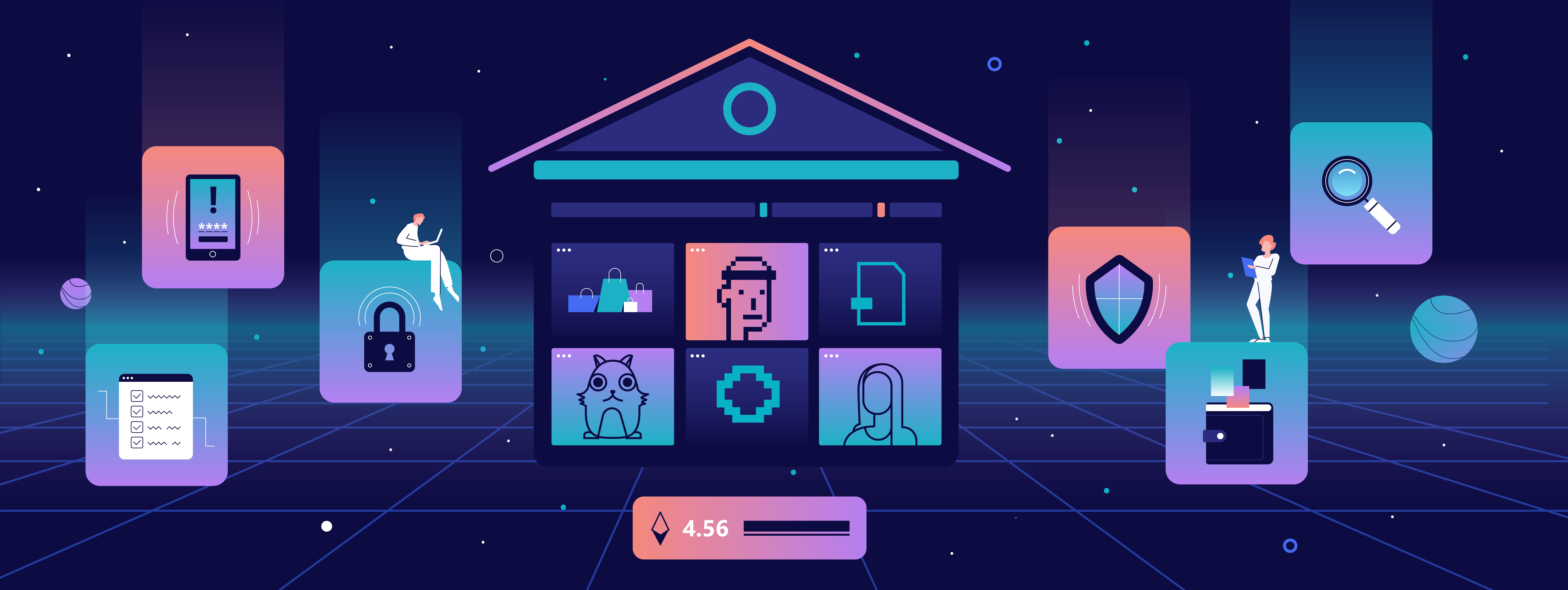NFT Trends to Dominate in 2022
Non-Fungible Tokens (NFTs) continue to gain traction in 2021. A recent report found that NFT sales jumped from $825 million in 2020 to $17.7 billion in 2021. NFTs have the potential to cause major disruptions due to mainstream adoption through brand-name organizations, as well as the opportunities the field creates for collecting, betting, trading, displaying, and gaming. In this article, we explore how the space may look in 2022, and what trends are likely to dominate.
What are NFTs?
Non-fungible tokens (NFTs) are blockchain-based digital tokens that represent ownership of a specific digital asset.
The digital asset may be text, pictures, artwork, sounds, videos, games, or other creative content. NFTs use blockchain technology to verify ownership rights for digital content and assets.
The buyer gets a token of the original copy and basic usage rights, but cannot replicate or reproduce it.
But NFTs go beyond copyright for one-of-a-kind digital assets. The digital ledger records the asset history, its creator, and acts as proof of ownership. Additionally, they convert unique digital artwork into tokens to prevent concept copying or duplication.
Online markets like OpenSea and Nifty Gateway allow digital artwork production, purchase, and sale. The thrill of purchasing non-fungible tokens is in owning a genuine piece.
Hence, collectors, fans, and investors trust in the verifiable scarcity of NFTs. With basic usage rights, buyers can sell NFTs for a profit, while creators can also include a royalty agreement that gives them a portion of the profits when their NFTs are traded on secondary markets.

Trends that fuel NFT’s 2022 growth potential
With its growing use cases, the industry is speculated to soar even higher in 2022. Here are the trends we’re looking at along the way:
Branding owned by the community.
Brands can give the IP rights control to the community who can then produce a variety of art, designs, content, and more.
Since they are blockchain-based NFTs, creators are guaranteed payment for future reuse of their work, any creative efforts, and compensation for their contribution at every participation stage.
Avatar Casting.
NFT casting refers to the process of embedding the detailed product information data with a specific TokenID in a digital mold.
NFTs offer several significant advantages over traditional intellectual property (IP) creation. For instance, users can own a piece of a larger brand and profit from it, which IPs can't accomplish.
In addition, users can create their own art for the group with NFTs like Bored Ape Yacht Club, adding a new level of creativity to an already creative community of animators, musicians, and artists. NFT avatar casting is expected to take off in 2022.
Ethereum 2.0 energy solution.
The rise in users on the Ethereum blockchain has led to network congestion. This has further increased the carbon footprint it takes to produce an NFT on the Ethereum blockchain.
Now, with the rolldown of Ethereum 2.0, this will no longer pose a challenge.
With Etherium 2.0, the fees and energy consumption will gradually decrease while providing higher output. These changes favor another breakout for NFTs on the network.
Personality NFTs.
In 2021 we got a sneak peek of many leading artists performing in the metaverse.
The trend is likely to spike as artists have already seen what the virtual world can do with NFTs. As a result, more and more artists are expected to join the bandwagon in 2022 to perform in metaverses with their animated personalities.
NFTs and gaming will continue to intersect.
NFTs are slowly outgrowing their initial use case of promoting art and focusing more on a utility like gaming, avatar casting, and Web 3.0 marketing.
For instance, fashion and sports companies sell their products in metaverse games like Roblox. Play-to-earn games have also contributed to the adoption of NFTs as people buy and sell products and properties in the virtual world.
Their use in the gaming world has already gained traction, but that is only the beginning.
Web 3.0 take off.
The internet's evolution is in sync with NFTs. The gist of Web 3.0 is all about owning and getting paid for content creations. The current developments in blockchain technology, artificial intelligence, and the effects of the pandemic set the conditions of web 3.0.
Digital tagging and ownership.
Everything bought will likely have a digital record to show who owns it, which creates an opportunity for creators to develop things with additional transparency.
Closing Thoughts
2021 was just the beginning of the NFT space. The average trade volume has increased to $687 million each week thus far in 2022, up from the average trade volume of $620 million every week during Q4 2021.
Moreover, it does not seem to stop anytime soon. NFTs will play a vital factor in other emerging innovations like the metaverse and web3 space.

